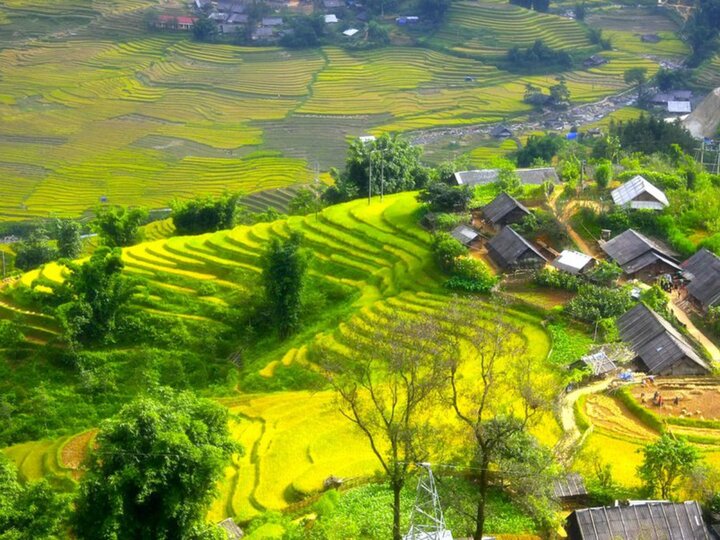1. Where is Ban Sin Chai? Why is Ban Sin Chai chosen by many tourists?
Ban Sin Chai is located in San Sa Ho commune, about 5-7 km from the center of Sa Pa town. This small village is favored by nature with a special position - where traditional H'Mong stilt houses blend with majestic terraced fields.
What makes Ban Sin Chai's special attraction is the hundreds-of-years-old terraced fields, which have been preserved by the H'Mong people through many generations. Each level of terraced fields creates a perfect natural picture that is rarely found elsewhere. The houses with rammed earth walls and characteristic Pơ Mu roofs dot the mountains and forests, creating a peaceful natural scene.
Unlike other tourist villages in Sa Pa, Ban Sin Chai still retains the simple way of life of the H'Mong people. As the trend of experiencing local culture becomes increasingly popular with tourists, this village becomes an ideal destination for those seeking pure nature. The friendliness of the local people, along with the intact preserved H'Mong cultural heritage, create an authentic and close-to-nature tourist experience that few places can offer.
2. Detailed Guide to Traveling to Ban Sin Chai
2.1. Traveling from Hanoi to Sa Pa
The journey to explore Ban Sin Chai begins with conquering the route from Hanoi to the center of Sa Pa town. Tourists can choose sleeper buses with prices ranging from 250,000 to 400,000 VND per trip and a travel time of about 5-6 hours via the Noi Bai - Lao Cai expressway. But for those who love conquering roads, the overnight train to Lao Cai station is a very attractive option, after which tourists will continue their journey by bus to Sa Pa with a total travel time from Hanoi to Sa Pa of about 7-8 hours.
For group travel, if tourists want to be proactive with their time, driving yourself from Hanoi via the Noi Bai - Lao Cai expressway is an excellent choice. This route is not only safe but also allows for stops to admire the scenery at many beautiful points along the way.
2.2. How to Get from Sa Pa Center to Ban Sin Chai
When tourists arrive in Sa Pa, the final 5-7 km journey to Ban Sin Chai offers many interesting options. The trekking route from Sa Pa center through Cat Cat village to Sin Chai is an unmissable experience for nature lovers. It takes about 1.5-2 hours to walk, but every step brings beautiful scenery of terraced fields and the Northwest mountains and forests.
Renting a motorbike in Sa Pa center for 100,000 to 150,000 VND/day is a popular choice for groups of 2-4 tourists to travel to tourist destinations in Sa Pa. The road to Ban Sin Chai is relatively easy to travel, and the natural scenery on both sides of the road is magnificent, allowing tourists to be flexible with their time and check-in at stops along the way.
For families with elderly people or young children, choosing a taxi from the center is a wise decision, with a cost of about 100,000-150,000 VND per trip, which will ensure comfort and safety for the family.
The most popular route is to follow the route to Cat Cat village; tourists only need a few more minutes by car to reach Ban Sin Chai. Currently, some providers offer electric vehicle services connecting the Cat Cat - Sin Chai route, suitable for guests needing mobility assistance or wanting a local guide.
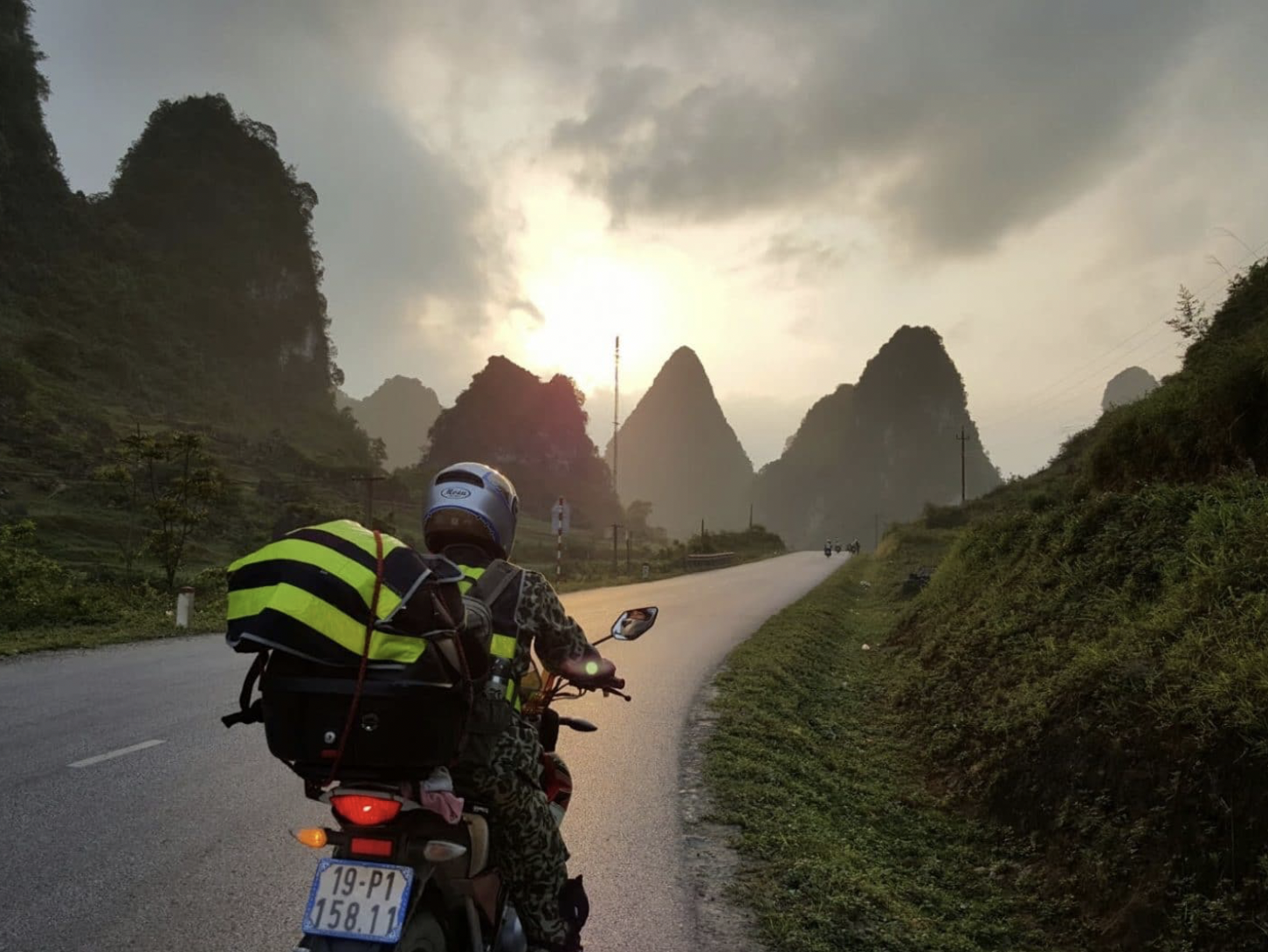
The road to Sin Chai Village is one of the routes worth conquering when visiting tourist destinations in Sa Pa. (Source: Collected)
3. Discover experiences at Sin Chai Village
3.1. Trekking Sin Chai Village - The original natural route
The trekking route to Sin Chai Village is rated by many tourists as one of the most memorable experiences in Sa Pa. This route has a moderate slope, suitable for most tourists of all ages. When following the trail, tourists will admire the floating sea of clouds drifting leisurely over the mountain slopes, creating a magical scene like a fairyland.
During the rice harvest season from September to October is the best time to trek to Sin Chai Village. The entire terraced fields are dyed golden, creating a perfect natural picture. Or the azalea season blooming from March to April also brings an equally impressive experience with vibrant flowers covering the Hoang Lien Son region.
For a safe and enjoyable trekking trip, tourists should prepare non-slip sports shoes, comfortable sportswear, and bring personal drinking water. Check the weather before departing, especially avoid trekking in heavy rain or dense fog. Unmissable check-in spots include the view of terraced fields from above, characteristic earth-walled houses, and small, clear streams along the way.
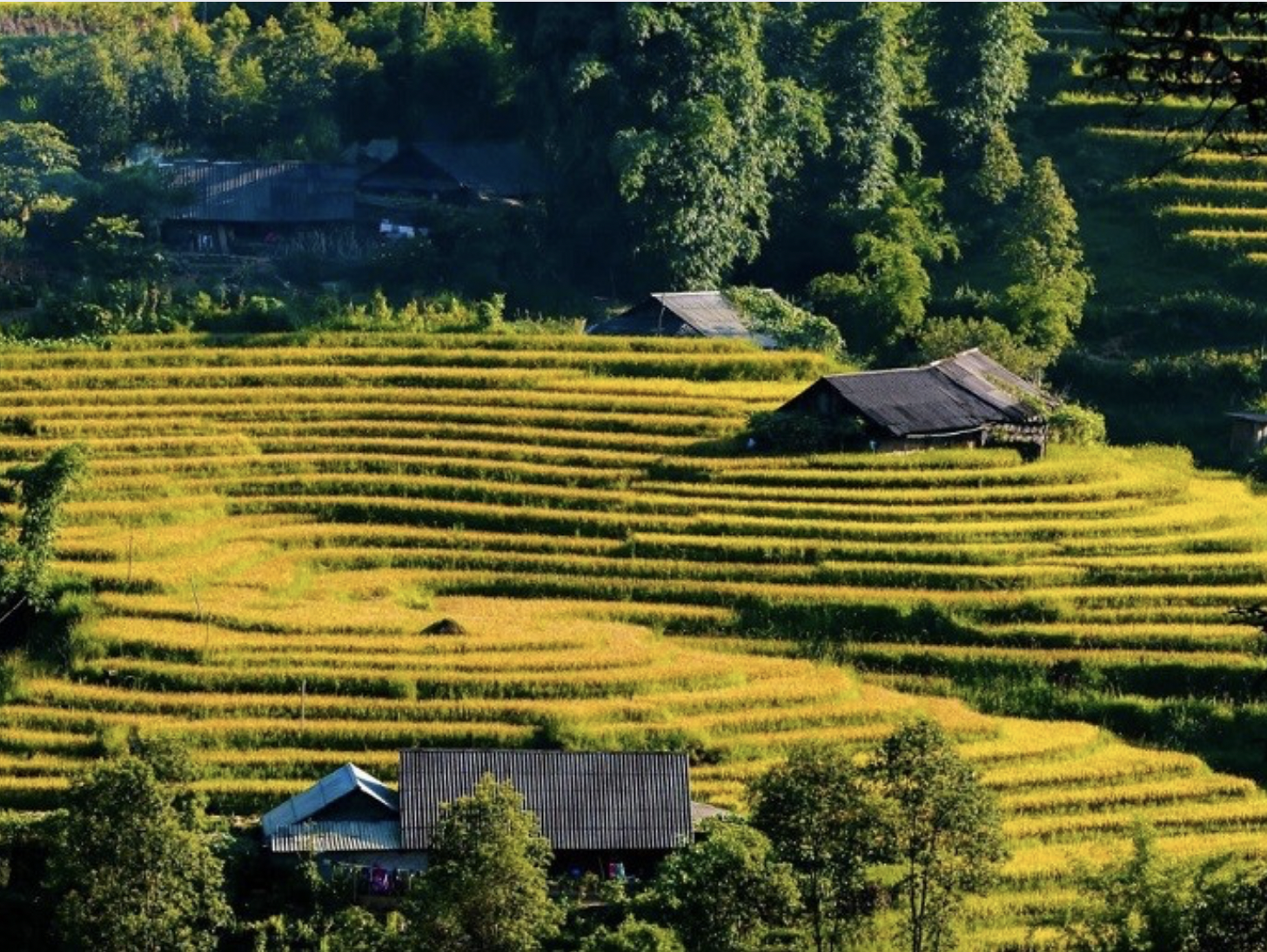
The terraced fields in Ban Sin Chai will be covered in a shimmering golden color, creating a beautiful natural picture. (Source: Collected)
3.2. Discovering the life and culture of the H'Mong people
Stepping into Ban Sin Chai, visitors feel like they've entered a colorful and mysterious H'Mong cultural world. The rammed earth houses with traditional 'po mu' roofs are not just dwellings for the local people, but also showcase the H'Mong people's wisdom in adapting to the harsh climate of the high mountains. This unique architecture helps keep warm during the cold winter and cool during the hot summer days.
The vibrant brocade costumes of the H'Mong people in Ban Sin Chai seem to tell the story of a rich, ancient culture. H'Mong women often wear traditional flared skirts exquisitely hand-embroidered with motifs carrying deep spiritual significance. While men wear indigo shirts and simple hand-woven trousers, but no less impressive. Every stitch contains the dedication and talent of the artisan, along with the long-standing traditional culture of the H'Mong ethnic group.
The most special thing about visiting Ban Sin Chai is the hospitality and friendliness of the local people. Visitors have the opportunity to stay in homestays, cook with the host family, learn about traditional brocade weaving, or learn to make corn cakes. These cultural exchange activities not only offer interesting experiences but also help visitors understand more deeply about the rich spiritual life of the H'Mong people.
3.3. Unique cuisine and agricultural products in Ban Sin Chai
The cuisine in Ban Sin Chai is a perfect combination of fresh ingredients from the mountains and the traditional cooking secrets of the H'Mong people. Five-colored sticky rice with vibrant colors from natural leaves, a dish that is not only visually appealing but also has an unforgettable distinctive flavor. Additionally, fragrant roasted 'thit lon cap nach' (piglet carried by the arm), marinated with local spices, creates a unique rich flavor.
Sturgeon and salmon hot pot are the most favored dishes by diners when visiting Ban Sin Chai. The fresh, sweet fish meat blends with wild vegetables and local spices, creating a captivating feast. Furthermore, the characteristic smoked dried buffalo meat ('thit trau gac bep') and 'thang co' - a traditional H'Mong dish, are all distinctive culinary experiences not to be missed.
To fully enjoy the local cuisine, visitors should pre-order meals with homestays or community eateries. This ensures the dishes are prepared fresh and delicious and in the traditional style. Respect local dining customs. If the opportunity arises, diners can consult with the host to try 'ruou can' (straw wine) - a characteristic alcoholic beverage of the Northwest mountains. This small detail will help visitors have the most authentic culinary experience.
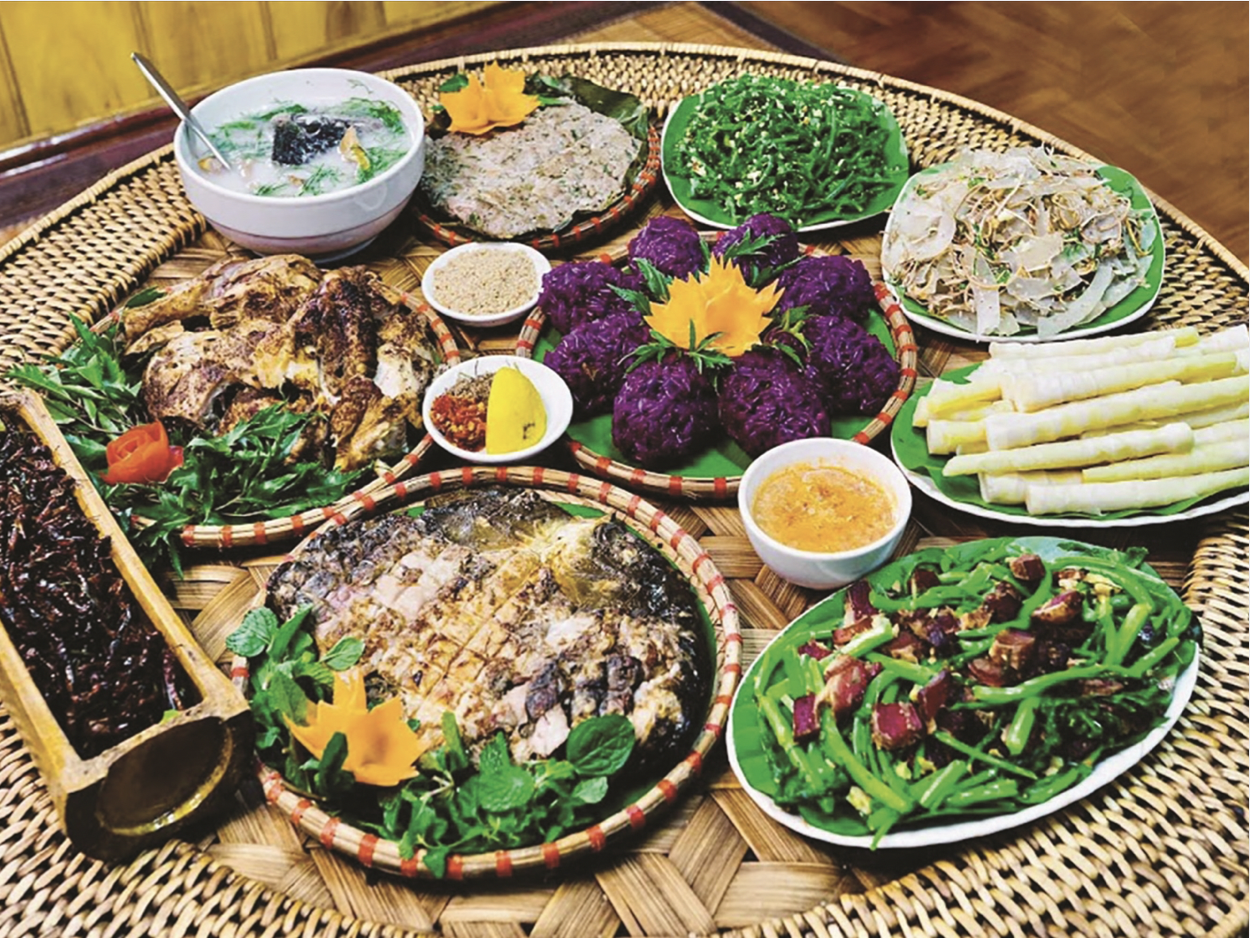
The traditional cuisine of the ethnic groups in the Northwest region, with its rich and unique flavors, has been and is contributing significantly to local tourism development. ( Source: Collected )
4. Ticket prices, costs, and services at Sin Chai Village
4.1. Entrance fees and services in the village
The cost of visiting Sin Chai Village in 2025 is maintained at a level suitable for community tourism, with entrance fees ranging from 50,000-70,000 VND/person. Especially for children, the tourist area offers many preferential policies suitable for this age group. This fee not only covers the sightseeing experience but also contributes to the fund for conservation and sustainable tourism development in the village.
Tour guide services at Sin Chai Village are priced from 250,000 to 500,000 VND/day. These guides are usually locals with extensive knowledge of the culture, history, and nature of this land. They not only lead the way but also act as a bridge to help tourists better understand the life and traditions of the H'Mong people.
Motorbike rental services in the center of Sa Pa, priced from 100,000 to 150,000 VND per day, remain the most economical and flexible choice for tourists. Some units offer electric vehicle services with special routes to Sin Chai Village, suitable for tourists who want transportation assistance and to learn more about the local culture.
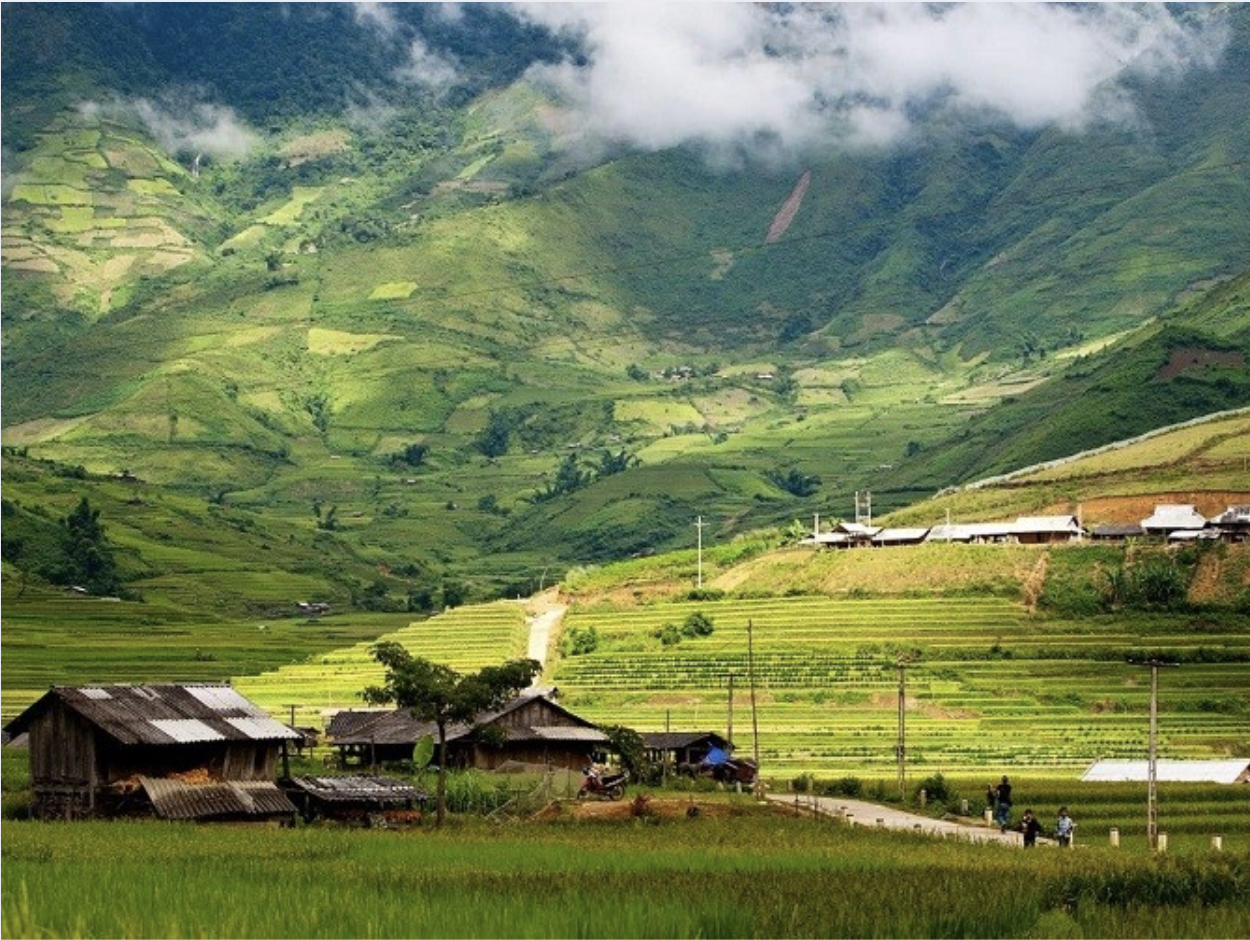
Trekking tourism with local guides helps tourists have a comprehensive local experience. ( Source: Collected )
4.2. Some notes on services and reputable tour operators
When choosing a tour to explore Sin Chai Village, tourists should prioritize reputable travel agencies and focus on cultural heritage preservation. Tourists can refer to companies like Vietravel, SaPa Trekking Tours, travel agencies often organize combined trekking tours of Cat Cat - Sin Chai - Fansipan, focusing on cultural experience and interaction with the local community. These tours not only bring experiences and knowledge but also contribute to sustainable tourism development.
Community-based tourism in Sin Chai Village is increasingly receiving attention with programs for experiencing community life, learning local crafts, and enjoying traditional cuisine. These activities are designed with the aim of respecting and preserving H'Mong culture, while creating conditions for sustainable economic development for the local people.
When choosing accommodation or tourism services in Sin Chai Village, tourists should prioritize choosing businesses associated with heritage preservation and natural resource protection activities. This not only ensures a quality experience but also contributes to the sustainable development of community tourism in the village.
5. Festivals and typical cultural activities in Sin Chai Village
5.1. Traditional festivals of the H'Mong people
The Gau Tao Festival, usually held in January annually, is the most important cultural event of the year for the H'Mong people in Sin Chai Village. This is a major occasion for the H'Mong ethnic community to pray for blessings and celebrate the New Year with traditional rituals passed down through generations. Tourists can immerse themselves in the festive atmosphere filled with laughter and singing and the sound of H'Mong flutes echoing throughout the valley.
The Field Opening Festival marks the beginning of a new harvest season; annually around the 7th day of the first lunar month, the Dayak ethnic group in Lao Cai organizes the Field Opening Festival. This festival holds sacred meaning, expressing the gratitude of the Dayak people towards heaven, earth, and ancestors. Special activities during the festival include call-and-response singing contests, flute dancing, traditional costume performances, and contests for making corn cakes and handicrafts. This is a great opportunity for tourists to immerse themselves in the festive atmosphere, witness firsthand the culture of the ethnic minorities in the Northwest region, and take colorful photos of the local life here.

Festivals not only strengthen the community but also provide an occasion for tourists to experience local culture with attractive cultural, artistic, sports, and ethnic culinary activities. ( Source: Collected )
5.2. Community cultural activities and experiential programs
Ban Sin Chai offers tourists many traditional community cultural activities. Especially, the experience of making corn cakes the ethnic way is a very interesting experience, from selecting corn, grinding it, to shaping and baking the cakes over a red fire. In addition, the exquisite brocade embroidery art also attracts many tourists, especially those who want to learn about this unique art form.
Traditional folk games of the ethnic people, such as nem con (ball tossing) and danh pao, bring a joyful atmosphere and strengthen community bonds. Tourists can participate with local people, creating memorable cultural exchange moments at Ban Sin Chai . These activities are not only entertaining but also help to understand more deeply the community spirit and lifestyle of the local people here.
The ideal time to fully experience the cultural activities at Ban Sin Chai is during the festival season or the rice harvest season from August to October. This period not only offers beautiful scenery but the local people also have more free time to share and guide tourists in participating in local traditional cultural activities.
6. Tips when exploring Ban Sin Chai
Preparing suitable clothing is the most important factor when exploring Ban Sin Chai ; a light jacket and a raincoat are essential for tourists because the weather here changes unpredictably. Non-slip sports shoes will help you move safely on the muddy paths after rain. Bring enough drinking water and insect repellent to protect your health throughout the journey.
When enjoying local cuisine, diners should be cautious with water sources and food. Avoid drinking untreated stream water and limit trying specialty dishes of unknown origin. This helps you protect your personal health and fully enjoy your trip to Ban Sin Chai .

Sin Chai Village still retains the simple, rustic characteristics typical of highland villages. ( Source: Collected )
Respecting local customs and culture is essential when visiting Sin Chai Village. Always ask for permission before photographing local people and do not arbitrarily enter homes or touch sacred objects such as altars or corners of people's houses here. This respect not only demonstrates the tourist's culture but also creates a good relationship with the local people.
To get the best photos at Sin Chai Village, visitors should take advantage of the light in the early morning or late afternoon. This is the time when the scenery and light are beautiful for photos of terraced fields combined with the scenery of clouds covering mountains and hills. Photo opportunities that visitors cannot miss include the road leading to the village - offering a panoramic view of the terraced fields along with rammed earth houses on the mountainside and a clear blue stream. In 2025, the natural "cloud gate" at the entrance of the village and the trail around the terraced fields will become "hot" spots for stunning virtual living photos.
Sin Chai Village asserts its unique position on the Sapa tourist map in 2025 with its pristine, rustic charm and distinctive H'Mong culture. This is the ideal stopover for those seeking a perfect balance between nature, culture, and authentic experiences. Come and feel it with your own feet, then share memorable moments from this peaceful Northwestern countryside!

